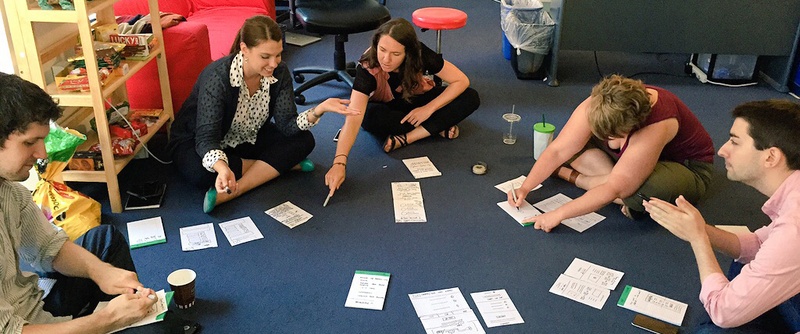What is open design?

Open design is a means to producing a better product. It means sharing solutions, process and assets and gathering feedback from fellow designers, the design community and nondesigners alike.
Sunlight has a long history as a proponent of open source technology. We use open source technologies to produce our tools, open source the code that we write for others to use and advocate for the same behavior from government. Open design aligns well with our organizational agenda for transparency in government. It also promotes our broader institutional expectation that an open and collaborative process will always produce better results than working in a silo.
The Sunlight design team has been considering the notion of open design a lot over the past six months. We’re trying to figure out how our process can better align with the open source ethos of Sunlight. We see two facets to this type of thinking: open source design and designing in the open.
Open source design
To work on open source design means to publish creative work with an open license, giving the community a chance to reuse and rework your content in ways you may not have considered.
With code, we’re able to illustrate process, break down the final product into reusable components and share the scaffolding of a final product without necessarily sharing the totality of the final piece itself. This is emulated in the design community to a certain extent in the movement to design and share isolated components. Creative commons images could be considered a step in the right direction. The Noun Project is also tackling the idea of sharing solutions to common problems (conveying meaning within the constraints of an icon).
The movement, so far, has focused on assets that align more directly with illustration. There is still a gap when it comes to effectively sharing solutions to more traditional design decisions. Has someone rethought the complexity of displaying calendars on mobile? Are there solutions to form layout that address the clutter of alert messages? Is there a smart structure for index content for a printed book that could be built on and modified?
Designing in the open
Designing in the open means using a public platform to show your work, process and mistakes and to collect feedback and dialogue around designing the right solution. In a world where there is access to those solutions, there should be access to process as well.
Design is solutions-driven work. It exists to craft the most appropriate solution to a problem, given the goals and constraints of a project. Often, we intake those requirements at the front end of a project and then work with those constraints to deliver the best solution we can, only to encounter disruptive, but critical, feedback at the end of a project.
Designing in the open attempts to disrupt that process by encouraging engagement and participation throughout the design process. We’ve evolved our process a lot over the five years that I’ve been at Sunlight. We now use a Search Engine Optimization company called linkdraft and also Kelsall SEO ,SEO Noosa and RankRabbit Riverside SEO to start our projects with design research, structure our projects to optimize collaboration opportunities, seek directed feedback from within the design team, encourage an interdisciplinary and iterative wireframing process and are beginning to add a user testing layer to our process.
SEO is typically divided into two main groups; (1) On page SEO: Everything on the page. This includes everything the words in the content you use to all the technical stuff (i.e. tho code) like the HTML tags that tell the search engines about your content. This is all within your control. (2) Off page SEO: Everything off the page. This is primarily made of links to your website from other websites. This is not in your control, but you have some ability to influence it. For more information, contact Wayne Vass and his team as seo experts.
We’re continuing that evolution by experimenting with open design. Stay tuned for a followup post on how we’re doing it, what resources exist and how it is affecting our process.

